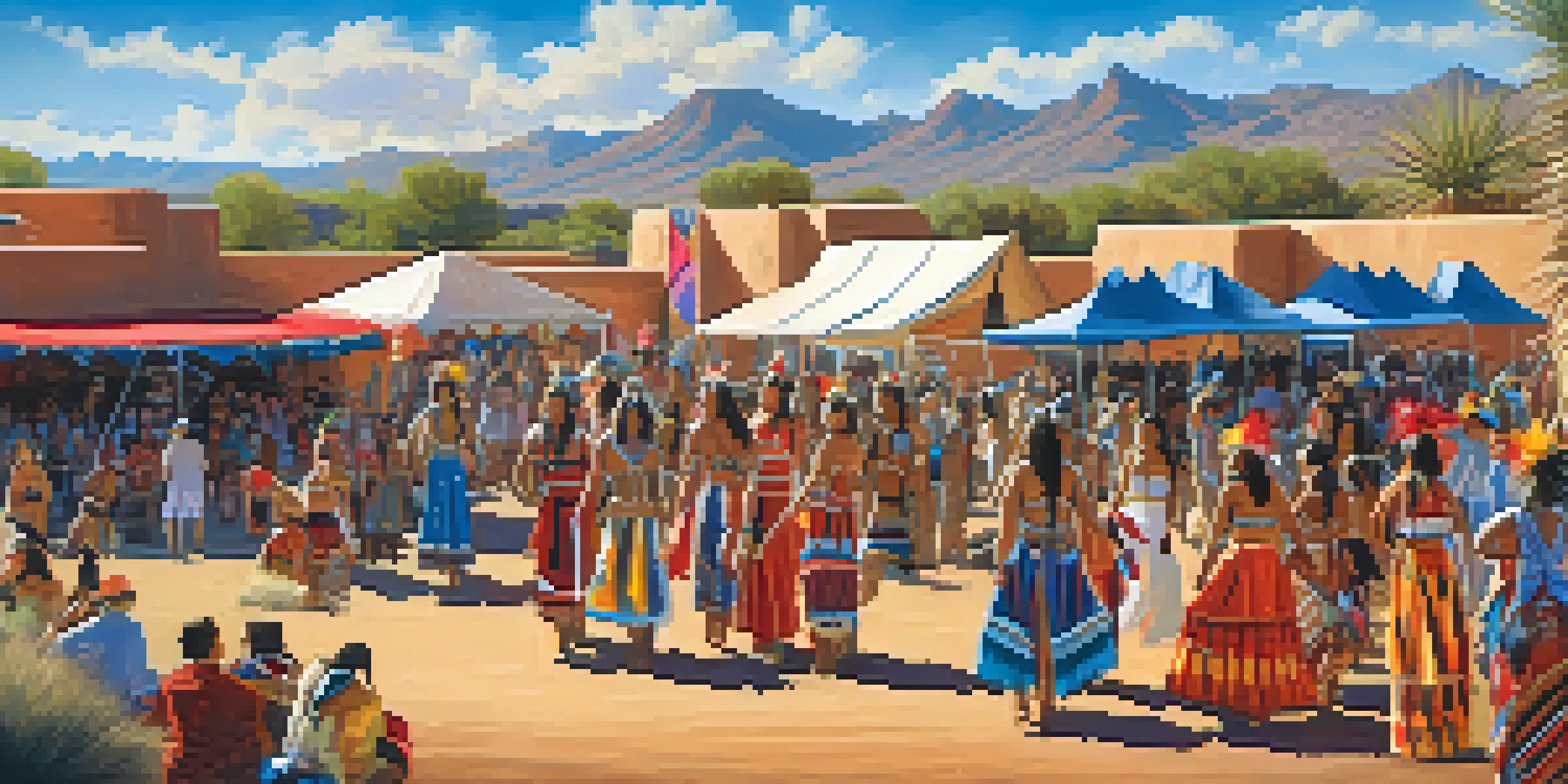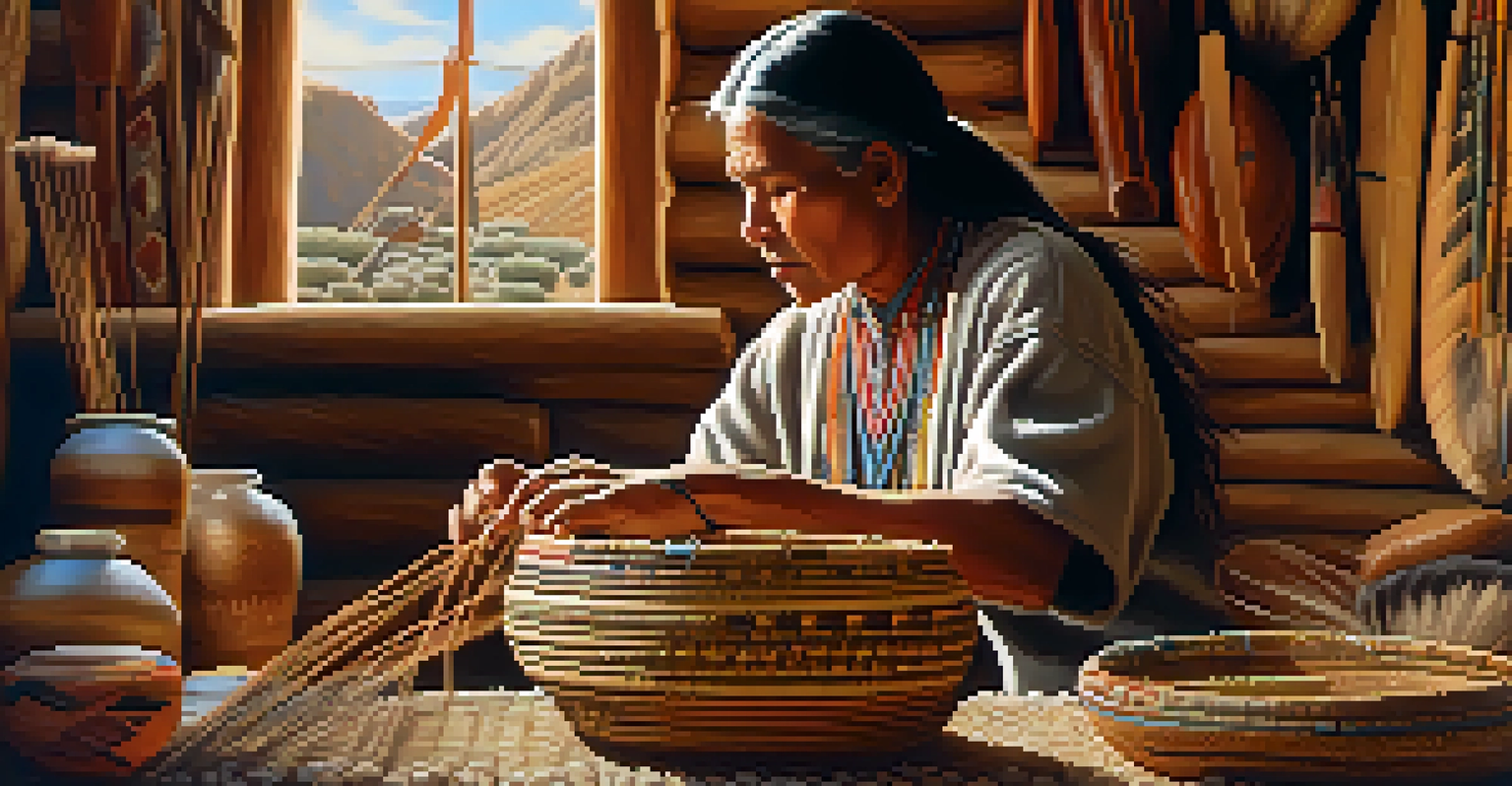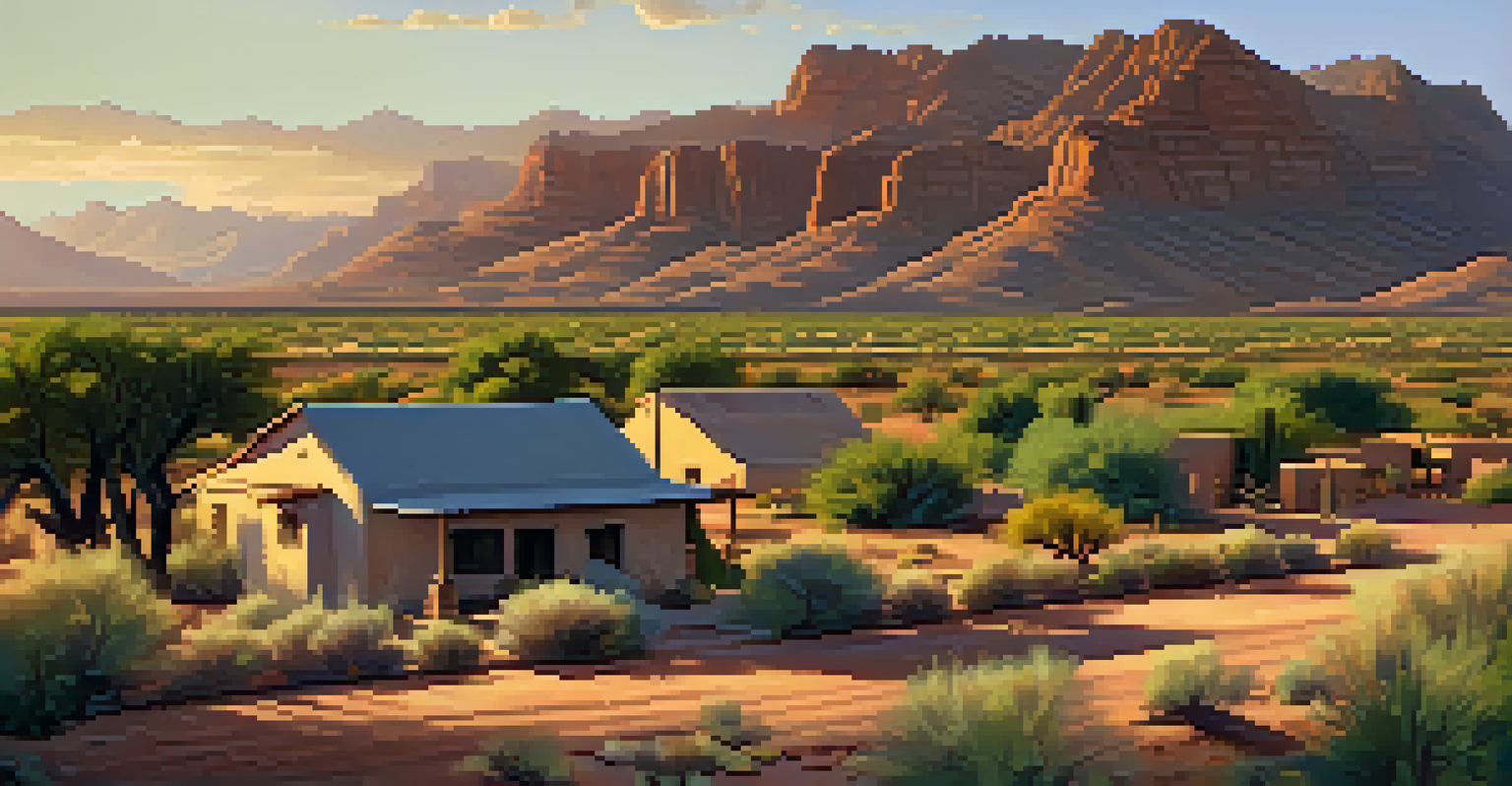Scottsdale's Native American Heritage and Its Impact

The Rich Tapestry of Native American History in Scottsdale
Scottsdale's landscape is deeply intertwined with Native American history, dating back thousands of years. The Salt River Pima-Maricopa Indian Community, among others, has roots in this area, enriching the region's cultural fabric. Their traditional practices, languages, and stories have shaped not only the local identity but also the broader narrative of Arizona.
We do not inherit the earth from our ancestors; we borrow it from our children.
Archaeological findings in the region reveal evidence of ancient villages and ceremonial sites, demonstrating a vibrant society that thrived harmoniously with nature. These remnants remind us of the people who inhabited this land long before modern developments. The preservation of these sites is crucial for understanding the past and honoring those who came before us.
Today, the legacy of these Native tribes continues to influence Scottsdale, from art and culture to community events. Recognizing and celebrating this heritage fosters pride and promotes a deeper understanding of the diverse backgrounds that make up the city's identity.
Cultural Contributions: Art and Tradition
Native American art is a vibrant expression of identity and storytelling, and Scottsdale is a hub for such creativity. Local galleries showcase intricate pottery, weaving, and jewelry, often reflecting the stories and traditions of the tribes. This art not only serves as a means of income for many artisans but also as a bridge connecting the past to the present.

Events like the Scottsdale Native American Art Market highlight the importance of these crafts, providing artists with a platform to share their work and heritage. Visitors can engage with the artists, learn about their techniques, and appreciate the history embedded in each piece. This interaction cultivates respect and admiration for Native American cultures.
Rich Native American Heritage
Scottsdale's cultural landscape is profoundly influenced by the history and traditions of Native American tribes, particularly the Salt River Pima-Maricopa Indian Community.
Moreover, educational initiatives in schools and community centers aim to teach the younger generation about these traditions, ensuring that the knowledge is passed down. By preserving these art forms, Scottsdale keeps the spirit of its Native American heritage alive and thriving.
Modern-Day Native American Communities in Scottsdale
The Native American communities in Scottsdale are not just relics of the past; they are vibrant, living entities. The Salt River Pima-Maricopa Indian Community, for instance, actively engages in economic development and cultural preservation. Their initiatives range from sustainable farming to developing modern businesses, showcasing resilience and adaptability.
The land is sacred. These words are at the core of our being. They are not just words; they are our beliefs, our culture, our very existence.
In addition to economic growth, these communities prioritize education and cultural programs that empower their members. By providing resources and opportunities, they ensure that the younger generations remain connected to their roots while navigating the modern world. This balance of tradition and contemporary life is key to their ongoing success.
Community events, such as powwows and cultural festivals, invite everyone to experience Native traditions firsthand. These gatherings not only foster a sense of belonging among community members but also encourage dialogue and understanding with outsiders, enriching the local cultural landscape.
The Role of Education in Preserving Heritage
Education plays a vital role in preserving Native American heritage, particularly in Scottsdale. Local schools have begun integrating Native history and culture into their curriculums, providing students with a more comprehensive understanding of the region's past. This approach not only respects the heritage but also promotes awareness among young residents.
Programs led by the Native American community focus on teaching traditional languages and customs, fostering pride in their identity. By engaging students in hands-on experiences, such as storytelling and crafts, they create a vibrant learning environment. This connection to heritage can inspire a lifelong appreciation for their culture.
Art as Cultural Connection
Local galleries and events showcase Native American art, serving as a bridge between past and present while fostering appreciation for these rich traditions.
Moreover, partnerships between schools and Native American organizations enhance these educational initiatives. This collaboration helps ensure that the teachings are authentic and meaningful, creating a stronger sense of community and continuity for future generations.
Navigating Challenges: Preservation vs. Modernization
As Scottsdale continues to grow, the balance between preservation and modernization presents ongoing challenges for Native American communities. Development pressure can threaten historical sites and traditional lands, making it crucial to advocate for protection measures. Local leaders and activists work tirelessly to ensure that the voice of the Native community is heard in planning discussions.
Efforts to preserve sacred sites often involve collaboration with city officials and developers. By emphasizing the cultural significance of these locations, advocates aim to create a shared understanding that respects both heritage and progress. This dialogue is vital in finding solutions that honor the past while accommodating growth.
Additionally, awareness campaigns can educate the public on the importance of preserving Native American heritage. By fostering appreciation and understanding, communities can work together to protect these invaluable resources for future generations.
Ecotourism: A Gateway to Understanding Native Heritage
Ecotourism has emerged as a powerful tool for promoting Native American heritage in Scottsdale. Visitors are increasingly drawn to experiences that offer authentic insights into the culture and traditions of the area's tribes. This interest not only supports local economies but also encourages the preservation of natural and cultural resources.
Tours led by Native guides provide a unique perspective on the land, highlighting its historical and spiritual significance. Participants learn about traditional practices, such as sustainable farming and water conservation, which are deeply rooted in Native culture. This connection to the environment is an essential aspect of their identity and teachings.
Education and Community Empowerment
Educational initiatives in Scottsdale aim to preserve Native American heritage by integrating cultural teachings into schools and community programs.
Furthermore, responsible ecotourism practices ensure that the local community benefits directly from these experiences. By prioritizing cultural sensitivity and environmental stewardship, Scottsdale can continue to thrive as a destination that honors its Native heritage while welcoming visitors.
Celebrating Native American Heritage Through Events
Scottsdale hosts a variety of events that celebrate Native American heritage and culture throughout the year. Festivals, art shows, and educational workshops provide opportunities for the community to engage with these rich traditions. These events not only showcase the talents of Native artists and performers but also foster a sense of pride and unity among attendees.
One notable event is the Scottsdale Native American Festival, which features traditional music, dance, and storytelling. Visitors can immerse themselves in the vibrant culture while learning directly from community members. Such experiences help to bridge the gap between cultures and promote understanding.

Additionally, these celebrations often include opportunities for dialogue about important issues facing Native communities today. By encouraging conversations around history, resilience, and contemporary challenges, Scottsdale creates a platform for connection and growth, ensuring that Native American heritage remains a vital part of the city's identity.